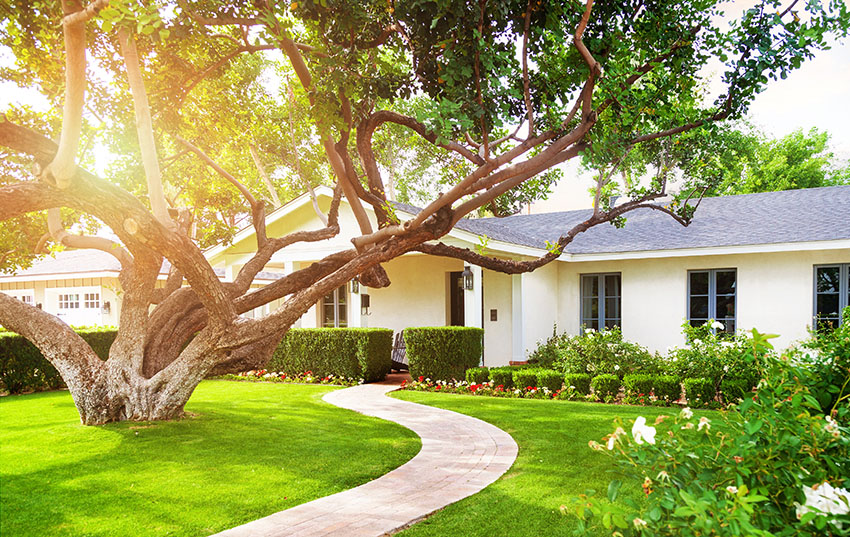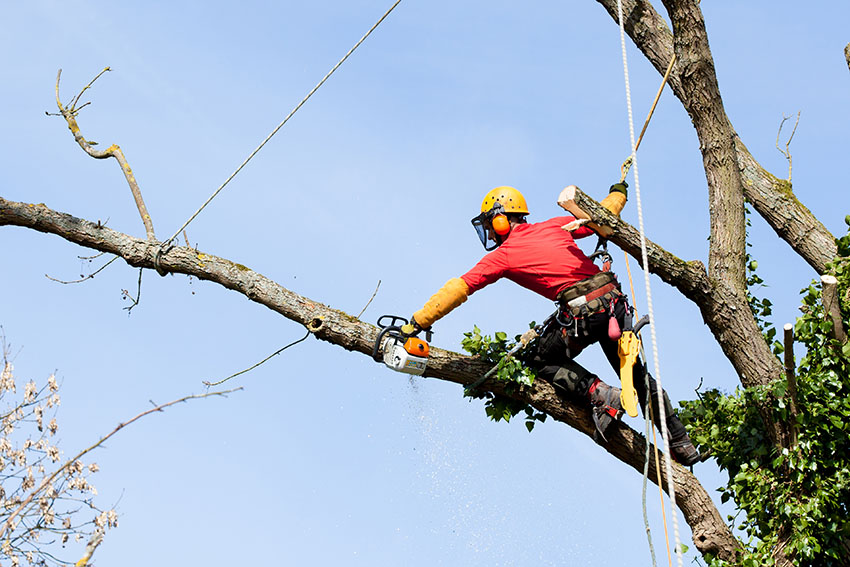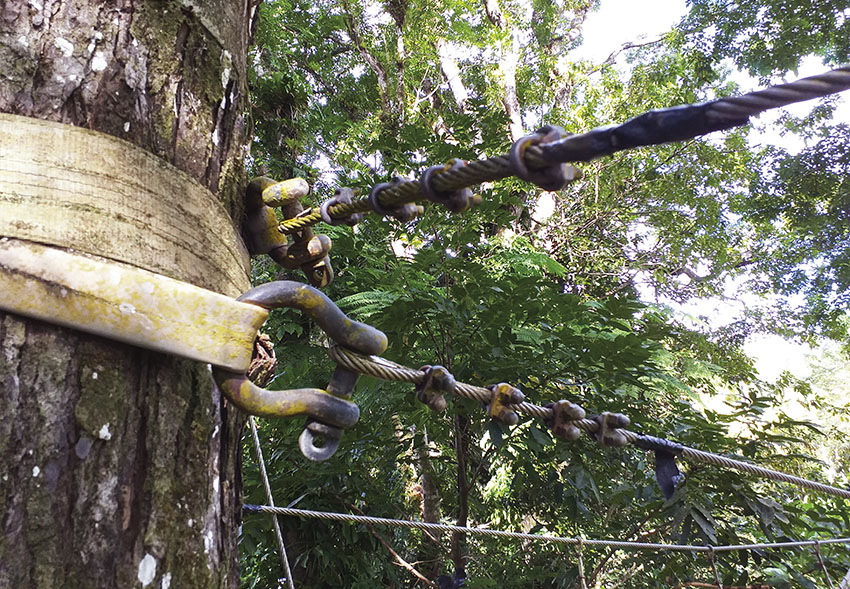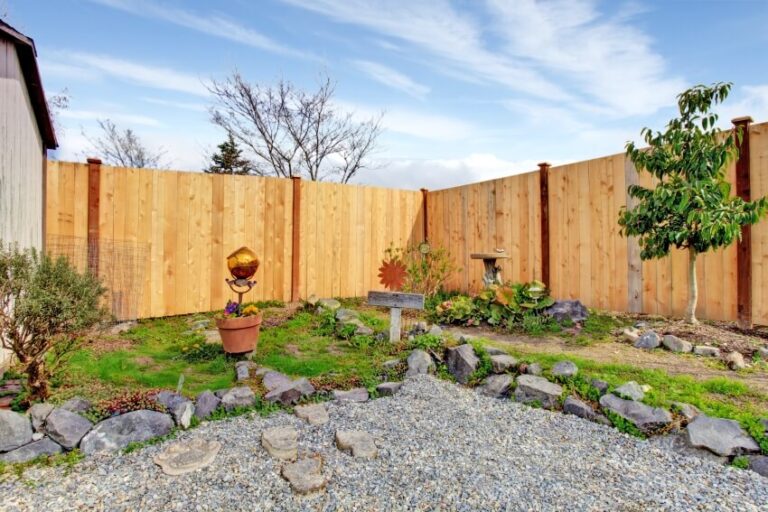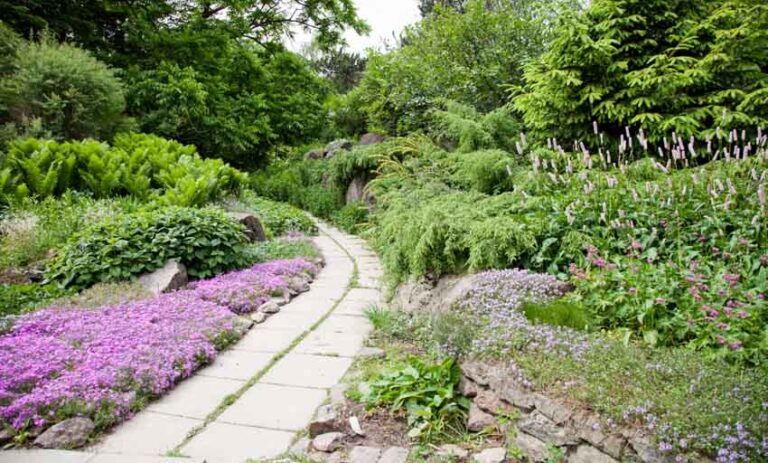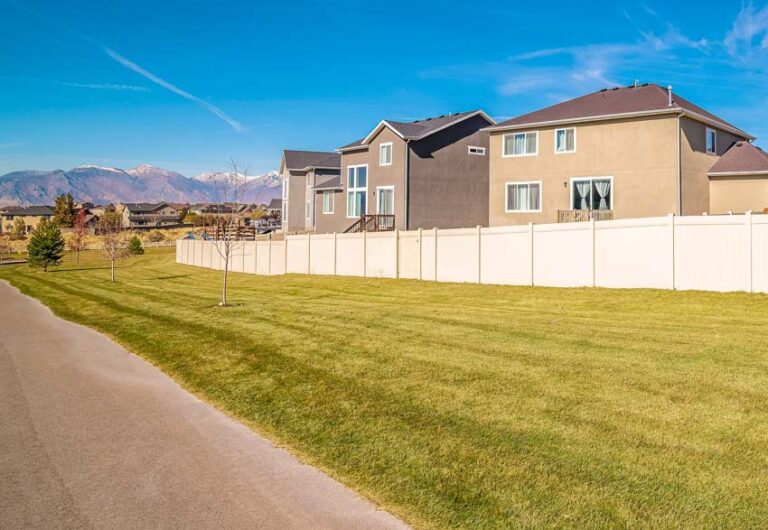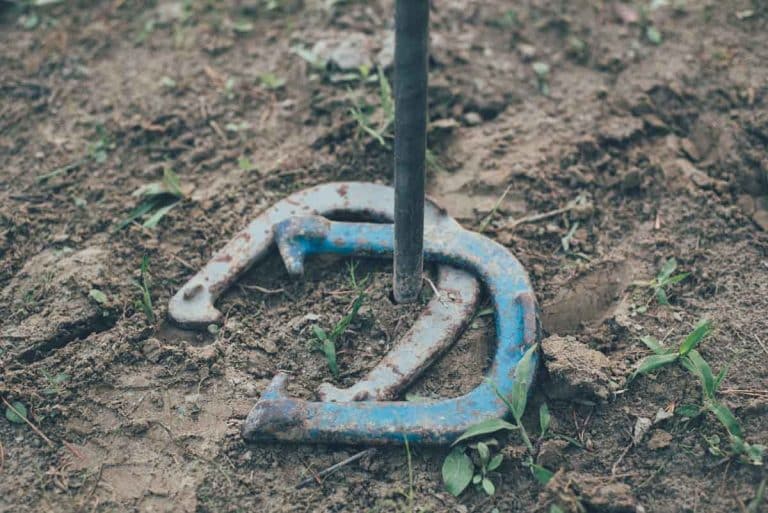Is Tree Cabling Worth It? Pros and Cons to Consider
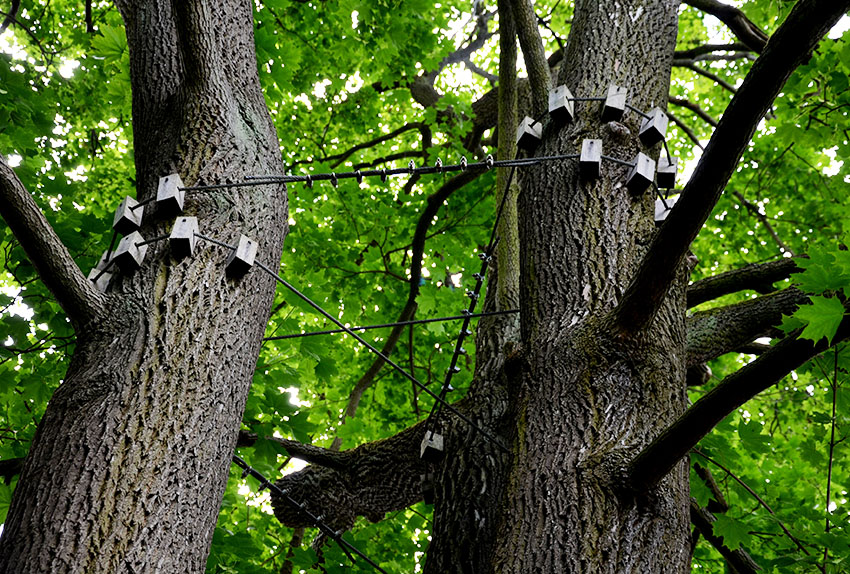
Most of us have either never heard of tree cabling, or have never seen it done in person. The odd counter-factor here is that tree cabling is a common practice, and happens frequently in urban, suburban, and rural areas alike. The purpose of this strange sounding practice is to help preserve a tree, lengthen its lifespan and secure any permanent objects around the tree that might be harmed by its untimely demise. A wide array of tree species are affected by splitting, and that’s where tree cabling comes in to save the day. Aside from its general purpose, though, there’s a lot more to it than holding up branches.
What Is Tree Cabling?
Tree cabling is essentially the epitome of installing steel cables in a way that supports large branches, which can be forked, bearing too much weight, or are otherwise at risk of breaking apart and falling. Cabling also helps prevent future issues in younger, healthy trees.
The use of cables is meant to offer trees a nice, flexible resistance wire to help balance them as they grow. For this reason, cables have to be at least somewhat allow for movement and growth of the tree over time.
That being said, cabling a tree can really help out the lifespan of a tree, especially if it didn’t have the time or resources to build a solid foundational trunk before diverging into separate branches.
Cabling Pros
There are tons of benefits to cabling a tree. Some of them are obvious, but others might not occur to your everyday homeowner. That treehouse in the back yard is likely giving your old tree a hard time, but cabling can help it last much longer.
Likewise, orchard trees can benefit from cabling in order to withstand the weight of bearing lots of fruit. Apples and plums in particular are prone to splitting, so it’s great to start cabling sooner rather than later. Here are a few more good reasons to consider tree cabling:
• Decrease the likelihood of damage from fallen trees. Cabling is essential for protecting houses, shops, cars, and most importantly, people from the dangers of falling trees. They don’t wait for everyone to get out of the way, and they certainly don’t wait for you to move your car!
The best course of action to take when a tree could fall near where you and your family spend time is to hire an arborist to assess the tree for the possibility of cabling.
• Increase the lifespan of your tree. Provided that a given tree is within its normal lifespan, cabling can help protect the tree from heavy wind damage, which often annihilates the tops of older trees. Having cables installed can strengthen the overall structure of a tree, giving it a longer lifespan and allowing it to grow to its full potential. Some trees can surprise you with their maximum height!
• Increase fruit yields. For fruiting trees, such as apples, plums, pears, quince, and other trees that produce heavy fruit, cabling can be the difference between a huge yield and a few fruits.
Fruit trees are especially susceptible to broken branches during their fruiting seasons, and cabling can help hold up heavy branches using the innermost structure of a tree to stabilize the load. Orchard farmers often use this method to preserve older branches of fruit trees that will still produce viable fruit.
• Maintain aesthetics. If you have a tree that has a certain aesthetic, where maybe it’s been trained in a certain shape or nature just created something amazing, you can help support branches that grow at awkward angles that are at high structural risk of collapsing.
Not only does cabling keep up the appearance of your special tree, but it can also add to the overall appeal. Cabling typically has a clean finished look, and the bolts used will grow into the trunk in just a couple of years, depending on the tree, so those won’t be visible for too terribly long.
Cabling Cons
While tree cabling certainly has its benefits, there are also risks involved in boring holes into a tree. Some are due to the nature of trees themselves, while others could be a result of a faulty or unmaintained cable system.
It’s also important to understand that cabling relies on the balanced proportions of a tree, so changing the direction of force in something as large as a tree can have potential consequences. Here are a few of the most common cons of tree cabling:
• Cut off essential nutrients to the tree’s upper branches. While cabling can be practical, it can also be dangerous for a tree. You may not notice this in decade, but once you drill a hole all the way through the core of a tree, you’ve severed its primary method of getting ascending nutrients to the tree-s canopy layer. This can cause issues down the road, but it takes quite a while for a tree to really feel this effect.
Unfortunately, it will always catch up to the tree in the long run. It’s best to avoid hole drilling and opt for other methods, such as cables that wrap around the outside of a branch instead of heading straight through it.
• Change the weight distribution of the tree. If you have a large branch just aching to fall over, chances are it’s leaning in that direction already. That means also that the branch is pushing some of the weight of the tree in the direction it wants to break off from. However, if a branch like this is cabled incorrectly (such as too high, too low, or too taut,) then the tree may change directions in terms of weight distribution.
You may want to ask your professional if cabling a branch to save it is worth the tree possibly falling in another direction, such as toward a house or other structure.
• Cabling issues. Another risk that comes with tree cabling is having cables installed poorly or incorrectly by a contractor. Unless you’re a professional arborist, trying to cable a tree on your own is very risky and could be potentially dangerous.
There are very specific requirements involved in cabling, such as tension, placement, and materials, so leaving this up to experienced professionals is the best way to ensure that cabling is done correctly and effectively.
Process Of Cabling A Tree
Cabling a tree is no easy work. Arborists need to have the ability to climb a tree safely, navigate tools and hardware while suspended in the air, and successfully install the cable so that it lasts and doesn’t cause the tree any harm.
It might sound like a circus, but it’s actually a very well choreographed procedure that requires lots of skill and training. Nevertheless, the experts know best. Here’s an idea of how it’s done:
• Step 1: Cleanup. First, the tree must be made accessible to the climber. All lower branches (green branches), if any, will be cut away from the base of the tree, along with any brush or bushes that may obstruct the process of climbing and installing the cable.
This opens up the area to the workers, who can prepare all the tools and necessary equipment to be readily available next to the tree.
• Step 2: Climbing. Next, a designated climber will ascend the tree using proper safety equipment to prevent falls and injuries. This person will cut away any branches that are dead or weakening a branch intended for cabling.
Cutting away the dead wood also makes for a cleaner workspace, where tools and hardware can be more easily maneuvered without catching on branches.
• Step 3: Cable installation. The arborist will then install the cable using either the drilling method or the wrapping method. They will make sure that the line is taught from one end to the other, without causing too much tension between two branches, which can cause girdling.
Getting the right tension prevents the tree from snapping under the pressure of the cable, but it should be taut enough to provide support.
• Step 4: Routine maintenance. Upkeep of the new cables involves annual checks to ensure that the cable is still performing as it should, and any adjustments that need to be made will take place at the same time.
Ideally, the professional who installed the cable system in your tree will come by once per year to check on things, but you can use any certified arborist to take a look if you need someone quicker. This is the most important step; a poorly maintained cable will cause damage to the tree, which can result in breaks and splitting elsewhere.
Types Of Tree Cables And Bracing
There are two main types of tree cabling and bracing, and these are the two we’ll focus on today. Of course, anybody can stick a piece of lumber under an apple branch to hold it up, but this isn’t enough to last long or provide much-needed support for other branches.
Cabling and bracing are important for older trees and those with a low split, which are at risk of breaking long before their time. Here are the two most common types of tree support:
Cabling
This is the gold standard for bracing large trees that have serious height or a very low split, which occurs close to the base of the tree. Cabling helps to take the weight off of the upper regions of the tree, which may be exposed to wind storms, lightning, and other catastrophes in which they would likely break off, destroying nearby trees or property.
The cables are usually set high up in the tree, but can be placed in multiple locations throughout the tree if its risk of falling is very high. This way, the tree can continue to grow and won’t lose its canopy!
Tree Bracing
Bracing is another aspect of tree support, and it’s a less invasive way to help out a tree you want to keep. For this process, threaded bracing rods are installed on smaller branches to limit their movement caused by strong weather conditions.
This type of support uses a system similar to cabling, in that it is installed higher up in the branches. However, bracing doesn’t include drilling any holes in the tree itself. Instead, hefty cables are used around the branches to form the same type of taut cable system that runs between two major branches. This helps to minimize damage to the tree, as well as any potential side effects of drilling too big a hole through the core of a branch or trunk.
Cost To Cable A Tree
While cabling a tree may sound like it would require a payment plan, think again. Cabling per tree can cost anywhere from $100 for a smaller tree to $500 for a larger one.
The only circumstance in which it would cost a great deal of money is if you have multiple trees that need cabling and, even then, you may be able to work out a bulk discount for providing the arborist a long-term project. This pricing varies significantly depending on the area you live in, the climate, and of course, the local economy.
Keep in mind that you can shop around to compare rates with different companies, and review professionals before you decide on one for your needs.
Does Cabling Hurt A Tree?
While cabling doesn’t necessarily damage a tree beyond saving, it can dampen the growth of the tree for a time. Most of the risk comes from improper installation; if an arborist drills too big a hole through the core of a branch or trunk, it can essentially inhibit the ascending nutrients delivered through the core to the upper canopy region.
On the other hand, improper maintenance of a cable system can be dangerous for a tree, too. Adjustments need to be made annually for most trees, so the upkeep is really the most important part of cabling.
Have a professional come out once a year to make any necessary adjustments and to check on the cable to ensure that it isn’t impeding growth or causing any harm to your tree.

